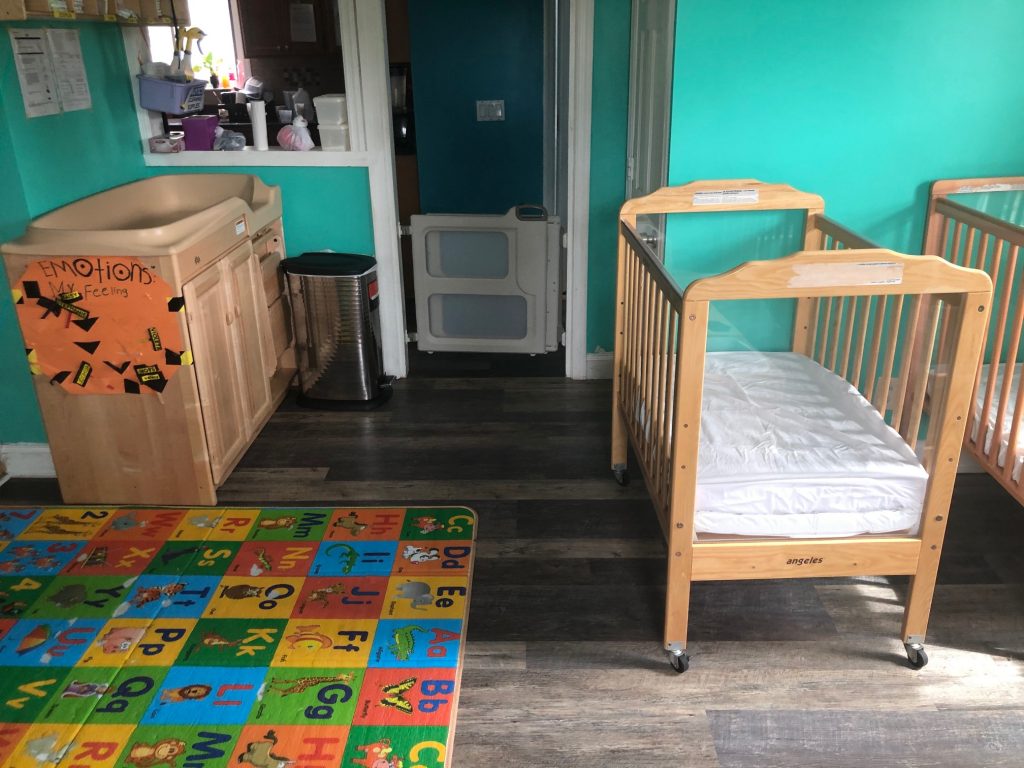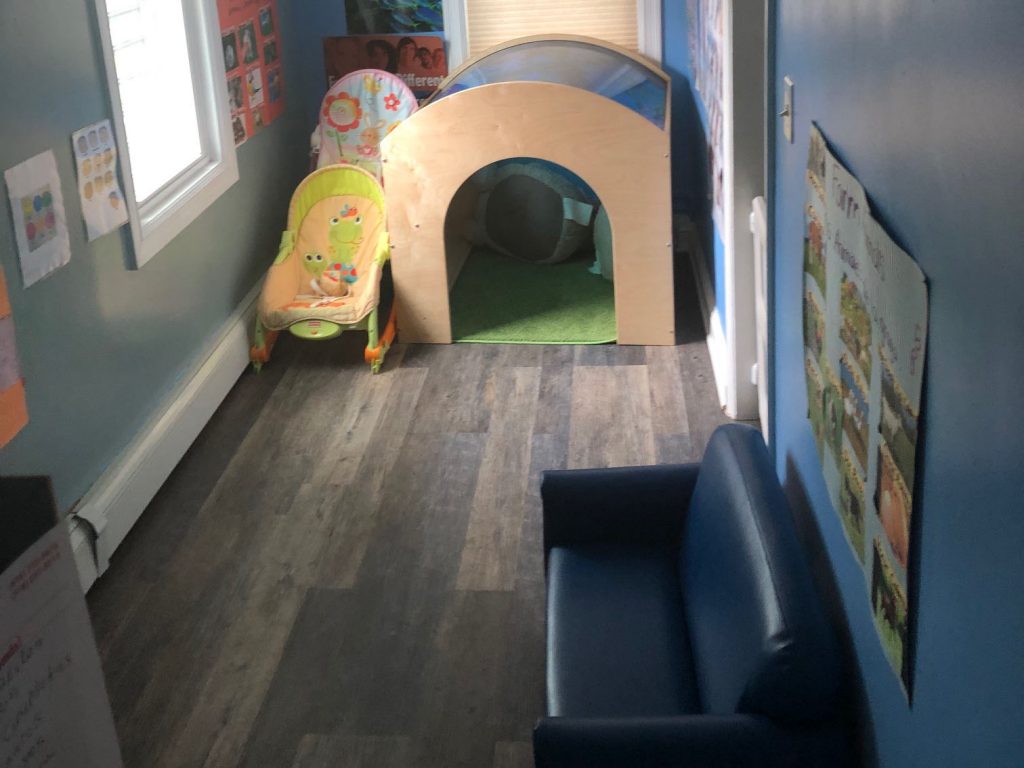“We were told to prepare for a huge influx of kids because of this and 2 weeks later I had to temporarily close because I couldn’t make payroll. I let the essential parents I had down because the operating cost far outweighed the income. I am a single mom with 4 kids that live in the same building as my daycare center. Here we sit with no way to pay rent, utilities, no stimulus check or unemployment (not for lack of trying). If it wasn’t for the school sending breakfast/lunches [for] my kids I don’t know what I would do. I’ve never felt so broke and alone in my life and if the PPP loan (I have applied 4 times and have heard nothing each time) doesn’t come through, I don’t even know if I can get back on my feet and open. I have no idea what I’m going to do at that point. I will have no job, no place to live, no income and 5 mouths to feed. So disappointed in NYS right now.” — Workforce Survey Participant
The New York Early Childhood Professional Development Institute in partnership with the Bank Street College of Education recently completed a survey to understand the impact of the COVID-19 pandemic on New York’s early childhood workforce. The survey included early childhood program leaders, teachers, and family childcare providers. Over 3,000 individuals who are members of state’s Aspire Registry responded. The survey sought to provide a descriptive snapshot of the workforce during the pandemic in order to stimulate dialogue to help the field navigate this crisis.
This pandemic brought to light the fragile state of our childcare industry, especially when it comes to family childcare. A family childcare professional usually starts the business (yes, it is a small business) because she (usually a woman) enjoys being with children and wants to make a difference in their lives and the lives of their families. Childcare in a family program tends to be more informal, without many written policies, and many times with no clear boundaries between home and business.
As the COVID-19 pandemic hit New York, families lost income and stopped sending their children to childcare. Family providers all of a sudden found themselves with fewer or no children in their programs.

Growing Together GFDC in Brooklyn is ready for children to come back.
As a Quality Improvement Specialist for QUALITYstarsNY, New York’s early childhood quality rating and improvement system, I was witness to family providers’ pain and frustration as stories of lost income became an everyday reality. Many experienced losses to the pandemic — of family members, friends, and colleagues. The loss of income was, and still is, a toxic stress that has been lingering for months, with no end in sight.
Most providers were barely making it.
June brought new Interim Guidelines from the NYS Department of Health, measures that followed CDC guidelines and aimed to protect children and providers. With hardly any money from tuition, providers now had to scrape for Personal Protective Equipment (PPE) and find disinfecting products that hadn’t been on the shelves since March. Loans and grants were made available, but as the provider described in her testimony above, most family providers had a difficult time applying. Many found the rules too difficult to understand, had a language barrier, lacked the documentation required for the application, or they simply did not qualify.

ABCD Three Sons GFDC in Westbury, NY is prepared to safely care for children when they come back.
Other providers had a most difficult choice: they were part of the population at a higher risk of contracting the virus. However, if they closed their doors, it would mean financial collapse – there was no other way to pay bills, the mortgage, and food. For some, if they lost their business, they would also lose their home. Many opted for continuing to serve families, most of whom were first responders and essential workers.
Child Care Resource and Referral Agencies (CCR&Rs) across the state, QUALITYstarsNY, unions, and so many community-based organizations came to the rescue with PPE, cleaning and disinfecting products, and needed materials for children in care or remote learning. The Office of Children and Family Services (OCFS), as the licensing body for family childcare programs around the State, also organized webinars to provide guidance and help understanding the Interim Guidelines.
Family childcare providers, as well as childcare professionals from center-based programs, soon realized that it was important to stick together to ride out this storm of unexpected difficulties. Sharing resources would be key in surviving to what seemed to be a never-ending sci-fi movie.
If there is a silver lining, family childcare providers are resilient in their determination to move forward and adapt to the reality of this pandemic. They should:
- Understand that they are not alone. Join in partnership with larger organizations (i.e., Head Start, UPK, family childcare networks, QUALITYstarsNY). Contact other local providers and share resources, findings, and yes, frustrations. All providers need someone who understands the childcare business to listen and provide support.
- Connect with a CCR&R agency; they have Health Consultants and Education Specialists that can support and answer many questions related to the business, and also help with needed supplies and PPE. (NYC CCR&R Consortium Daycare Providers | NYCCRR).
- Read the Interim Guidelines from NYS DOH and create a Safety Plan for the program.
- Rearrange the learning environments in the family program to include best practices during the COVID-19 pandemic (see QUALITYstarsNY webinars and toolkits.)
- Review polices and create policies if none exist. Parents need to be made aware of program policies and any changes that were made. Policies should be always in writing. Use very specific language when creating fiscal policies. Those conversations with families are difficult, but necessary, especially if there is another lockdown in the future. Tom Copland is a good resource for business policies.
- Think strategically. Are there opportunities to market the program? There is no better time to update websites and to include how the program is increasing health and safety protocols to maintain children and staff safety.
- Consider continuing with remote learning after the reopening, if families are interested. The reality is that not every child will go back to childcare in the immediate future. Remote learning may be an additional source of revenue to the program.
Finally, the most important: self-care. Family providers should think of the masks coming down on the airplane. If they do not take care of themselves, all these suggestions will be for nothing.
Borrowing the wise words of the author and lay theologian C.S. Lewis:
“You can’t go back and change the beginning, but you can start where you are and change the ending.”
What other resources have you found important in your work as a childcare provider in a COVID-19 reality?
Read the full report: New York Early Care and Education Survey: Understanding the Impact of COVID-19 on New York Early Childhood System
Karin Sperb is a Quality Improvement Specialist for QUALITYstarsNY, New York’s early childhood quality rating and improvement system. She received her Master’s in Early Childhood Bilingual Education from Bank Street College of Education, and previously worked in different capacities at Head Start and daycare programs in NYC and on Long Island.



